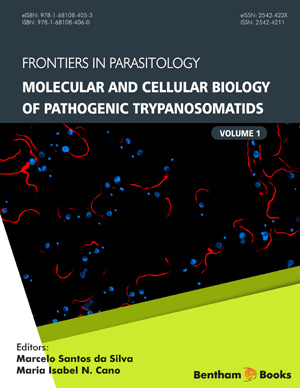Abstract
In 2005, the draft genome sequences of the parasites Trypanosoma cruzi, Trypanosoma brucei and Leishmania major, also known as the Tritryps, were published providing major insights into their genome structure and organization. Even though these parasites diverged around 200 to 500 million years ago, their core genomes are highly syntenic and conserved. These conserved regions are interspersed by retroelements, structural RNAs and species-specific genes related to host-parasite interactions. While T. brucei presents a subtelomeric expansion of genes related to antigenic variation, T. cruzi and Leishmania genomes contain species-specific genes related to cellular invasion and survival inside the mammalian host cells. Duplication events have also shaped the genome architecture of these parasites. As control of gene expression operates mainly at a post-transcriptional level in trypanosomatids, gene copy number variation is probably an efficient mechanism to enhance gene expression and increase sequence variability. These parasites also explore gene conversion mechanisms to generate variants and increase their surface complexity. Among the Tritryps, T. cruzi presents the most striking expansion of species-specific multigene families, which could be related to the parasite’s ability to infect any nucleated cell of a broad range of mammals. Chromosomal copy number variation is also well tolerated by these parasites, allowing the expansion of the whole set of genes simultaneously. The functional implications of these chromosomal expansions to the parasite biology are still to be determined.
Keywords: Aneuploidy, Chromosomal variation, Chromosomes, Comparative genomics, Copy-number-variation, Genome organization, Genome structure, Multigene families, Polycistron, Synteny.






















